Socotra island: The Unesco-protected 'Jewel of Arabia' vanishing amid Yemen’s civil war
The Independent presents the first in an exclusive series from Socotra, an island paradise under threat from a neo-colonial takeover, the vagaries of Yemen’s war and the spectre of climate change

Your support helps us to tell the story
From reproductive rights to climate change to Big Tech, The Independent is on the ground when the story is developing. Whether it's investigating the financials of Elon Musk's pro-Trump PAC or producing our latest documentary, 'The A Word', which shines a light on the American women fighting for reproductive rights, we know how important it is to parse out the facts from the messaging.
At such a critical moment in US history, we need reporters on the ground. Your donation allows us to keep sending journalists to speak to both sides of the story.
The Independent is trusted by Americans across the entire political spectrum. And unlike many other quality news outlets, we choose not to lock Americans out of our reporting and analysis with paywalls. We believe quality journalism should be available to everyone, paid for by those who can afford it.
Your support makes all the difference.Legend has it the otherworldly dragon’s blood tree first grew on the spot where two brothers, Darsa and Samha, fought to the death. In Arabic, it is known as dam al akhawain – “the blood of the two brothers”.
The unique tree, with its crimson resin and dense crown of prehistoric leaves, is a beloved symbol of the Arabian Sea island of Socotra and its parent country of Yemen.
But like the ancient Darsa and Samha, Yemen is a country of two halves once again at war with each other. The conflict places Socotra at the centre of a new power struggle between the weakened Yemeni government and the geopolitical ambitions of its ally, the United Arab Emirates (UAE).
The so-called Galapagos of the Indian Ocean – home to 700 endemic species – is the latest acquisition in the UAE’s growing modern empire: other extraterritorial Emirati projects include controversial ventures in Eritrea, Djibouti, Somaliland and the Yemeni islet of Perim.
Doing our best to avoid the attention of the pro-UAE authorities after two days’ journey on a cement cargo ship from Oman, The Independent is the first news outlet to access the island since Yemen’s war broke out three years ago and the Emirates quietly started taking over.
We found the UAE has all but annexed this sovereign piece of Yemen, building a military base, setting up communications networks, conducting its own census and inviting Socotra residents to Abu Dhabi by the planeload for free healthcare and special work permits.
Critics and activists say the UAE seeks to transform the island into a permanent military outpost-cum-holiday resort, and may even be stealing its Unesco-protected plants and animals.

Requests by The Independent for comment from UAE authorities for this story went unanswered.
In the past, the UAE government has said it is offering a “helping hand” to parts of impoverished Yemen that need it. The Emirates, part of an Arab coalition helping Yemen’s exiled government fight Houthi rebels, “is neither an occupier nor a troublemaker”, aspiring to “peace and stability in the region,” commentators say.
“Among the rules of political action is that you should build trust with your allies ... and put public interest ahead of personal ones,” UAE foreign minister Anwar Gargash has said of his country’s involvement in Yemen.
Socotra’s 60,000 inhabitants have lived in harmony with nature for thousands of years, almost completely isolated from the outside world.
Now, civil war, a foreign occupation and the looming spectre of climate change mean that a perfect storm has finally arrived on the island’s shores.
The intertwined threats are already rapidly affecting the local way of life and the archipelago’s delicate ecosystem.
An irresistible prize for the Middle East’s magpie
“The UAE has surprised everyone, even themselves, with how well they’ve done militarily in Yemen. They have almost had free rein as a result to control and have presence in whatever they want in the country, including Yemen’s ports, which is a prize for them,” said Farea al-Muslimi, a non-resident fellow at Chatham House in London.
After three years of war, the fractured Yemeni state is now a free for all. The UAE, long overshadowed by regional heavyweight Saudi Arabia, has discovered the war-torn country is an ideal testing ground for the post Arab Spring ambitions of its de facto ruler, crown prince of Abu Dhabi Mohammad bin Zayed.
Several ancient texts believe Socotra is the original location of the Garden of Eden: its name comes from the Sanskrit for “paradise”. It has enchanted adventurers from Alexander the Great to Marco Polo to the legendary Sinbad with its dragon’s blood trees, rare species of frankincense, aloe and pink desert roses, all cradled by the broken teeth of the Hajhir mountains above and waters packed with bright coral below.

Once at the heart of ancient silk and spice trading routes between the Arab world, Africa and Asia, today the island lies in the middle of one of the world’s most important oil trading channels.
As such, it combines the UAE’s military and economic interests.
While Dubai’s Jebel Ali is already the busiest port in the Middle East, the Emirates has begun monopolising other ports in the Red Sea and the Gulf, both stifling competition and heading off any hostile Houthi, and by proxy, Iranian attempts to seize control of the channel.
Over the past few years, the UAE has also become the world’s third-largest importer of arms and one of only 11 countries to maintain permanent military bases outside its own borders.
The opportunity to gain a foothold on strategically perfect Socotra arose at almost exactly the same time Yemen’s war broke out.
The Emirates plants its flag amid the ruins...
The Socotri way of life has changed very little in centuries: Bedouins still roam its steep valleys and limestone plateaux seeking shelter from the sun in the dry season and from rain and wind during the monsoon.
Until recently, occasional raids by Somali pirates and rusted, unused Soviet tanks were the only reminders of the world that lies beyond the ocean. There are few TVs and wifi only occasionally works well enough to deliver WhatsApp messages.
Effectively abandoned by the Yemeni authorities and destitute after two ferocious and unprecedented cyclones ripped across the archipelago in November 2015, locals turned to the UAE’s offer to help rebuild schools, hospitals and roads.
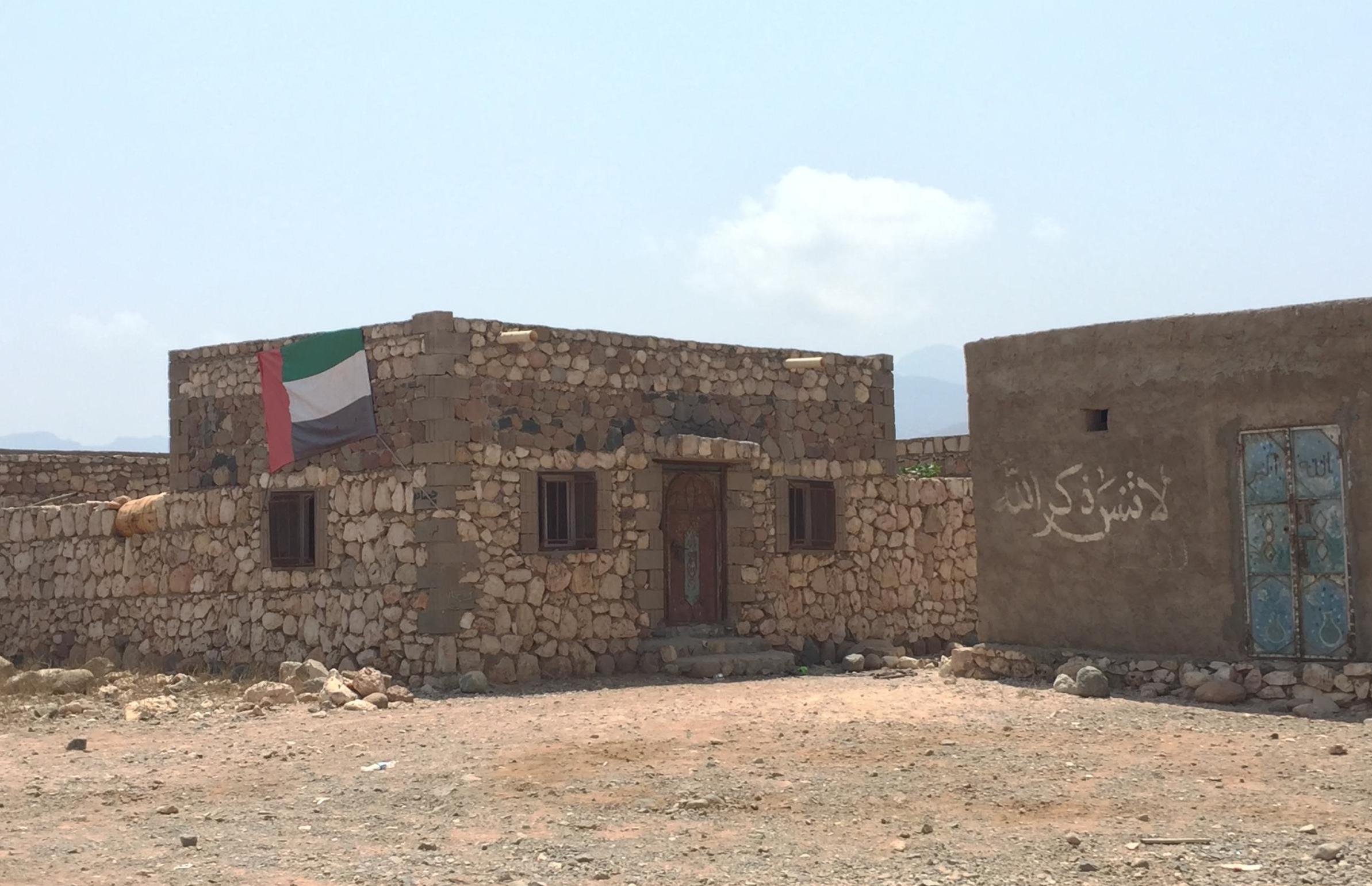
Two and a half years later, the Emiratis are still on the island – and they have no intention of leaving any time soon. Little by little, islanders say, their presence has become a part of everyday life.
“There are no Houthis to free Socotra from,” said local Abdul Wahab Al Ameri. “Why are they here?”
The green of the Emirati flag has sprung up in several villages, on official buildings and painted on the sides of mountains, along with messages thanking Mohammad bin Zayed for his generosity.
Rumours abound that the UAE is planning to hold a referendum on whether Socotris would like to secede from the mainland and officially become part of the Emirates in a Crimea-style vote, a development the Yemeni government has condemned.
According to several islanders, UAE officials allegedly went door-to-door last summer conducting a private census, the likes of which Socotra has not seen since 2004. Residents were told if they volunteered their names and other details, they may be offered money in the future.
The lack of transparency has fuelled fears across Socotra and wider Yemen over the full extent of the UAE’s plans.
It is widely believed and reported in Yemeni media that before President Abdrabbuh Mansur Hadi fled the capital Sanaa in the face of the Houthi take over in 2015, he leased Socotra and its three tiny uninhabited satellites to Abu Dhabi for 99 years, but no one knows for sure.
As with almost all news in Yemen, disinformation and rumour are rife, but both the exiled Yemeni government in Riyadh and Abu Dhabi officials have repeatedly refused to confirm or deny the reports.
...And begins changing island life
The Emiratis have also tried to wean the island off chewing the productivity-destroying plant qat, a beloved Yemeni national pastime.
Two boats of the stimulant leaves usually arrive from the mainland each week. In October the Emiratis seized the cargo of one such shipment, dumped it on the road between the port and the main village of Hadibo and started building a bonfire.
They were still pouring petrol on tons of the plant when a riot broke out in the town as men rushed to save it. Some picked up the oil-soaked leaves from the ground and put them in their mouths immediately. “UAE out,” locals chanted, according to one witness.
After the qat incident, protests against the Emiratis’ presence on the island became more frequent.
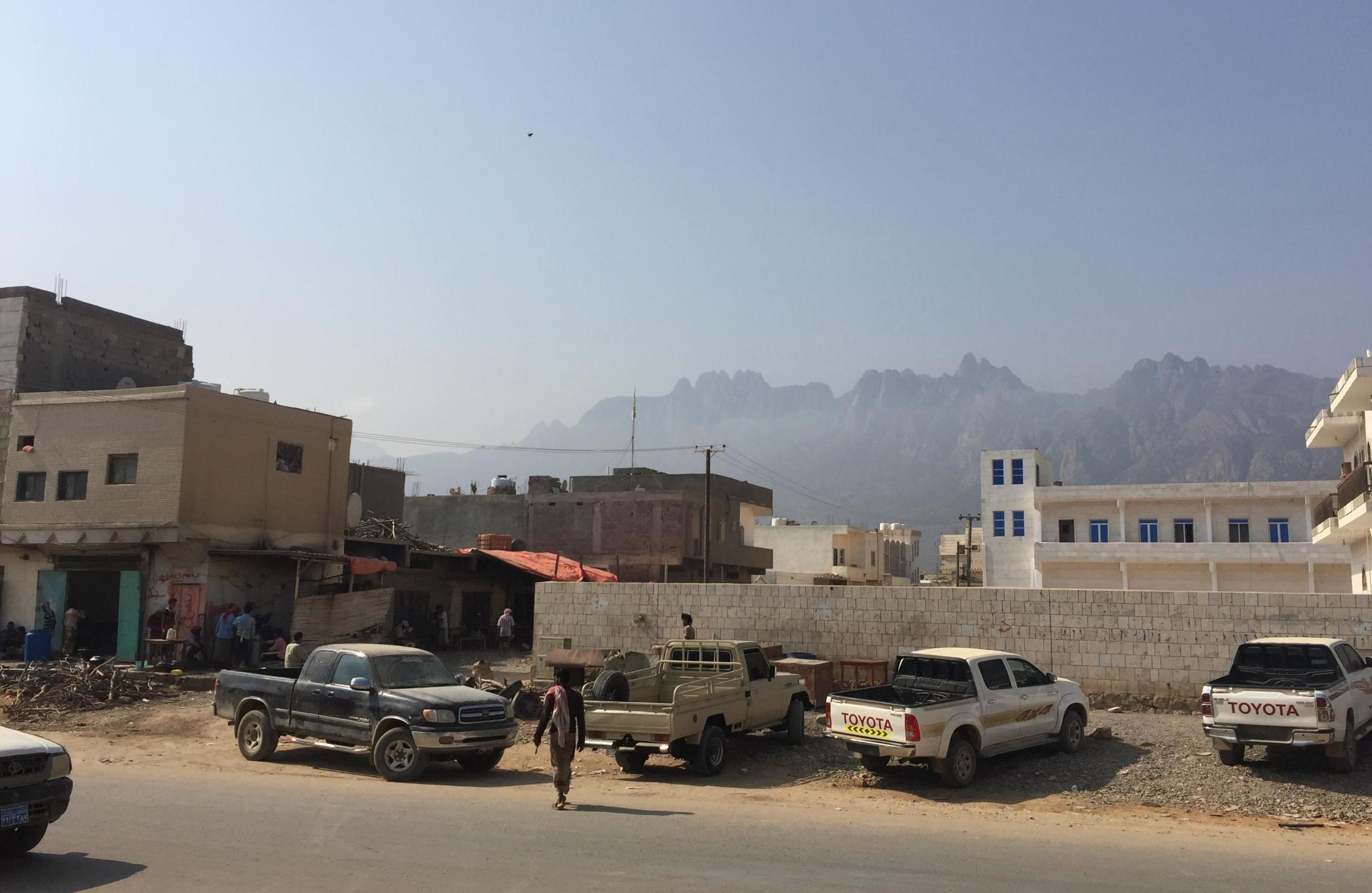
Qat shipments have not been interfered with since, but military men with red berets and the eagle crest of the Emirati Armed Forces still exit shiny white four-by-fours with blacked-out windows to saunter around Hadibo.
Other Emiratis with Socotran family or heritage, some fluent in the local unwritten language, Socotri, have been posted to the island as goodwill emissaries.
The Emirati-owned Etisalat is the best-functioning mobile network. Emirati products lines the shelves of an new supermarket too expensive for most locals to afford and children ask visitors for pens, sweets, and Emirati dirham.
Locals say parts of the island – 70 per cent of which is protected land – have already been bulldozed in preparation for building hotels, pools and other tourist infrastructure for coming Emiratis.
Some of the limestone and granite cliffs along Socotra’s coastal roads have indeed been recently scooped out by Emirati-imported JCBs, and construction work appears to be ongoing.
‘Don’t tell the foreigners anything about the UAE on the island’
The Emiratis are here now, one local said, but someone else was always going to arrive to use the island for their own ends. Russia, the US and Qatar have tried. “The Chinese are probably next,” he joked.
But the takeover has been a quiet one.
The UAE has not made any future large-scale development or mass tourism plans for Socotra public, and only admitted last May it sends military recruits to the Yemeni island for intensive battle skills, weapons handling and first aid training. Many of those troops end up posted to the front lines on the mainland, the UAE’s defence ministry says.
As well as two Yemenia Airlines flights to the mainland a week, since April 2017 the UAE-owned Rotana Jet has operated a weekly service between Hadibo and Abu Dhabi, bypassing central Yemeni authority and oversight.
While the creation of an airstrip in 1999 allowed Socotra to begin hosting businessmen from the mainland, as well as international ecologists, conservationists and tourists, almost no one has been issued a visa to visit since the war began in 2015.
Local tour operators have been forced to shut up shop and look for other kinds of work. The Rotana Jet flight bringing Emirati visitors is likely to line UAE pockets in the future, rather than their own, one Socotran said.
The only foreigners who have made it to the island’s shores have been a handful of adventure tourists, arriving on their own yachts or paying for passage on small cargo ships from Salalah in southern Oman, two-and-a-half days’ journey away.
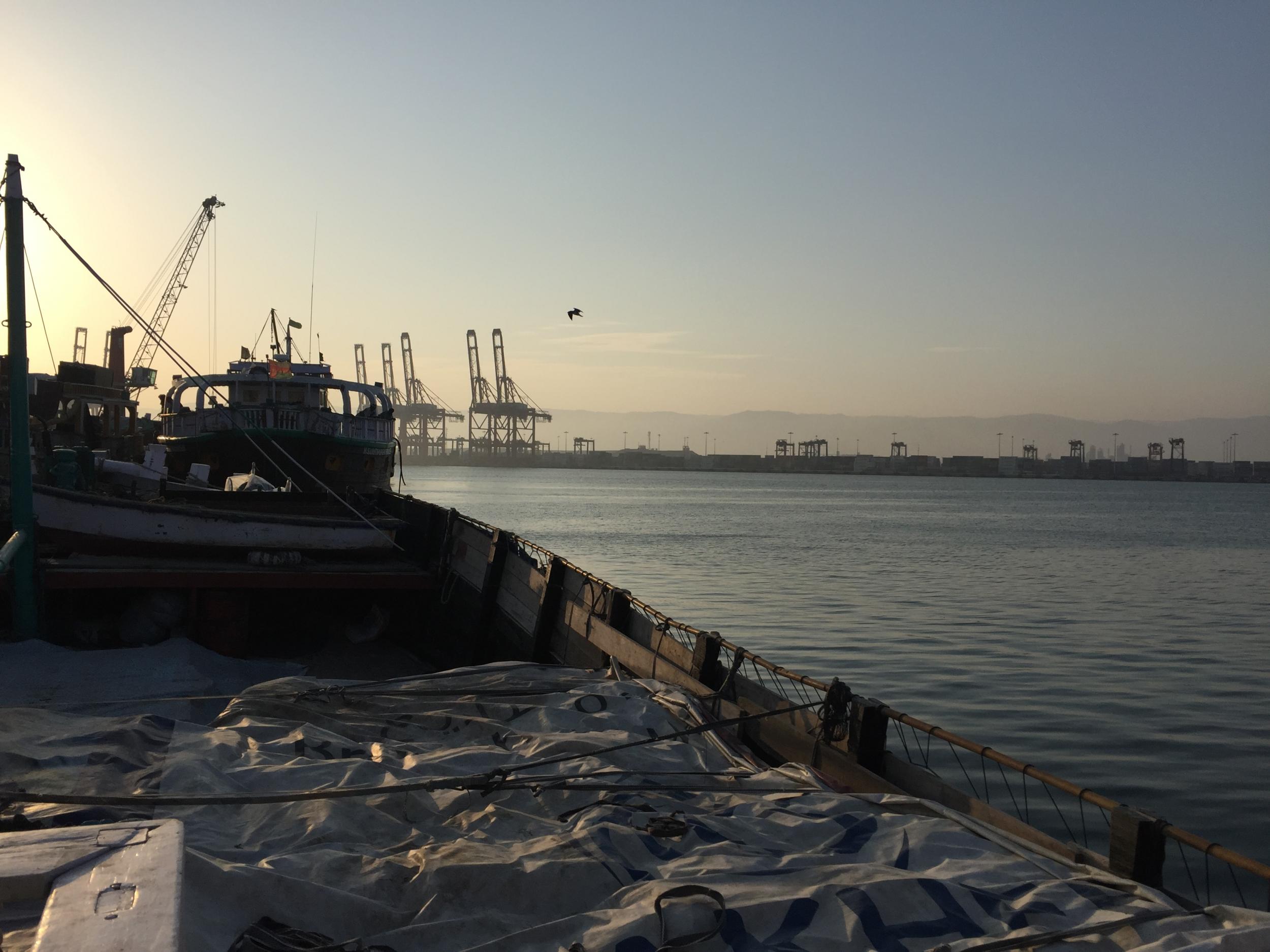
One self-described Emirati businessman The Independent came across said he was building luxury five star hotels above Socotra’s pristine white sand beaches and coral reefs.
Shortly afterwards, perhaps regretting his boast, he gave The Independent’s driver a bundle of Yemeni rial worth around $100 (£72) with the instructions, “Don’t tell the foreigners anything about the UAE on the island”.
When contacted via WhatsApp for this story and asked if he could elaborate on his actions, the businessman did not respond.
Investment, but at a price
In the past 150 years, Socotra has changed hands between the Mahra sultanate, Britain, South Yemen and modern Yemen.
But long marginalised by the centralised government, Socotra’s relationship with the state is ambivalent at best.
While it has the look and feel of mainland Yemen, the island’s inhabitants speak Socotri, a language older than Arabic, and men and boys here carry fewer guns than their mainland counterparts. Very few people have ever even travelled to the rest of Yemen, let alone further abroad.
The island’s estimated 60,000 residents, scattered across 600 villages, still mostly rely on the island’s fish stocks, date-yielding palm trees and goats to survive. Jobs and the opportunity for further study are rare.
Since the airstrip opened at the turn of the millennium, trade and visits between Socotra and the rest of Yemen increased, but local activists say increased exposure to the mainland has led to the “Arabisation” of local culture.
Ten years ago, qat and conservative Islamic dress for women were not part of the fabric of island life. Now, these mainland Yemeni hallmarks are ubiquitous. There are also fears for the future of the unwritten Socotri language.
The island is currently the only part of the country to escape the current civil war – but isolated, forgotten and poor even before the fighting broke out, the mainland violence has sent the cost of living skyrocketing.
For some, life is better since the Emiratis arrived.
According to Yemeni media, the military base has provided jobs for up to 5,000 newly recruited soldiers and the UAE reportedly tops up police and government salaries.
Socotra has extremely limited healthcare facilities and very few specialised doctors – but islanders said that many people are now receiving world-class medical treatment in Abu Dhabi, free of charge. Many more are now in the UAE enjoying subsidised education and work permits created especially for Socotris, rather than Yemenis in general.

Hadibo did not have electricity at night until the Emiratis installed a functioning power grid last year, although it is still too expensive for many people to use.
Abu Dhabi is even helping young Socotris get married, covering the costs by organising group weddings.
“This generous initiative reflects the deep ties between the UAE and Yemen, supports the social and psychological stability of its youth, and promotes community partnerships,” the island’s newly appointed governor, Ramzi Mahrous, has said.
The benefits come at a price some people think is too high.
Angry at successive governors they believe to be too friendly to the UAE, many Socotrans protest on the streets of Hadibo or social media to vent their anger. But in a climate in which it's not clear who's in charge, most are afraid to voice fears the island is losing its autonomy.
“People are scared to talk,” one local said over Facebook messenger. “It is not clear what could happen.”
On the mainland, reports say there are at least 18 secret prisons run by the UAE where hundreds of men swept up in the hunt for al Qaeda militants have been detained and tortured. Some detainees have even been flown to clandestine lock ups in Eritrea, across the Red Sea.
There is no media on Socotra, and journalists from outside have not been welcomed to find out what is happening on the island.
The disintegration of a dying state
With the Yemeni authorities too weak after three years of fighting to assert control over the interim capital Aden, feuding tribes have staked their claims to mainland territory, and while al Qaeda has lost ground in the last year, it remains a formidable player in the fighting.
President Hadi's government has little energy or ability to protect its peripheries from enemies, let alone allies.
His government, indebted to the UAE forces fighting on its behalf on the mainland and not wanting to antagonise its wartime allies, was initially muted in criticism of Emirati activity on its territory.
But as the UAE has grown bolder alliances in the Arab coalition have frayed.
Last summer the Emirates broke with both Hadi and Saudi Arabia by backing the formation of the Southern Transitional Council (STC), which wants renewed independence for Southern Yemen. The move led the Yemeni president to label the UAE an “occupier” rather than a “liberator”.
The stability of the coalition fighting the Houthis was thrown into further jeopardy earlier this year when STC fighters rose up against government-led forces they previously fought alongside.
The occupation of Socotra along with the possible formation of a new southern Yemen – an “eighth vassal Emirate” – symbolises Yemen’s descent into a failed state.
Now it looks as though Yemen could lose Socotra completely, anger is growing, and Yemeni politicians are speaking out.
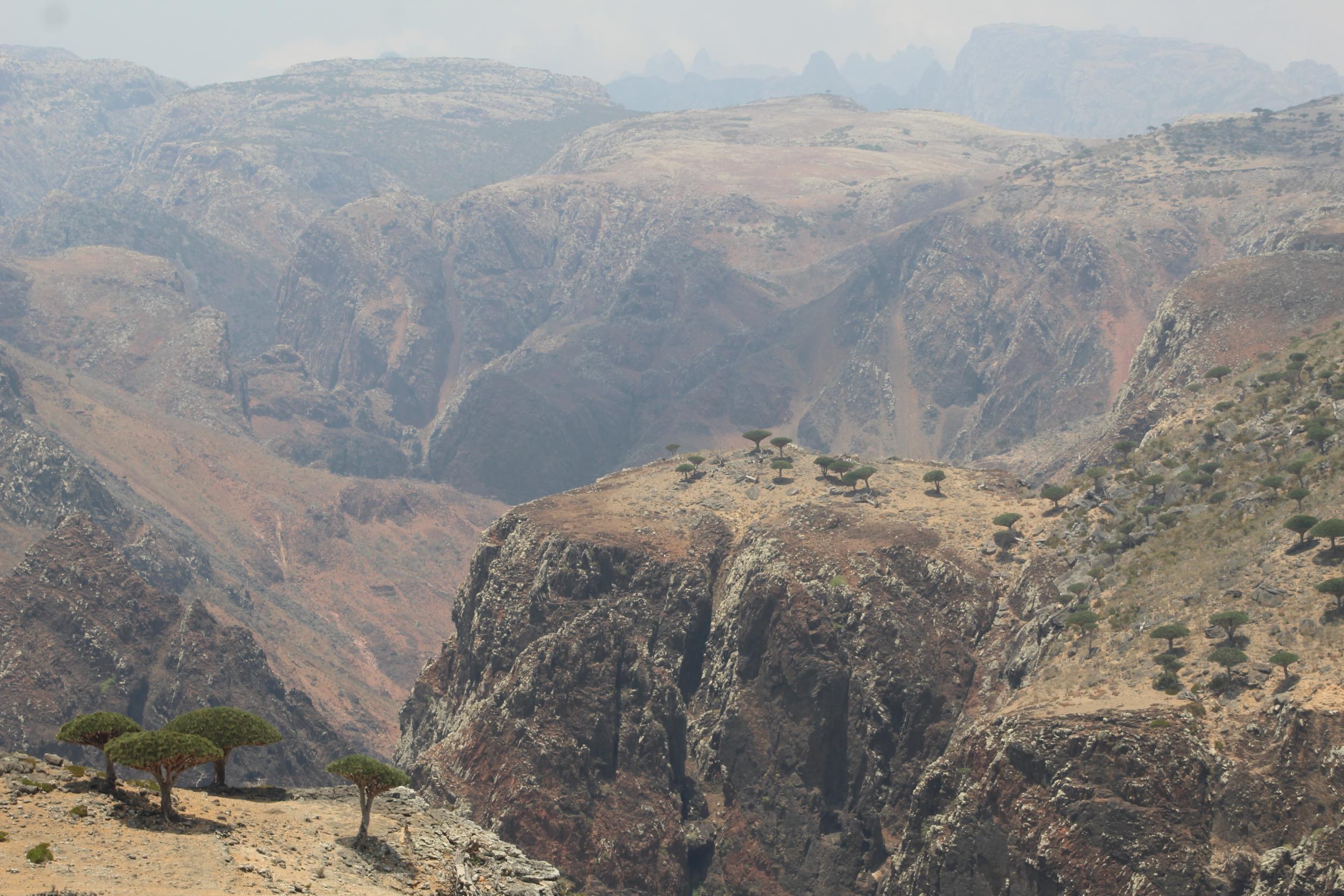
Earlier this year Yemen’s tourism ministry sent an official complaint to the United Nations Security Council asking the international body to accelerate a resolution preventing “occupying forces” from destroying the island’s natural beauty.
“In an unprecedented event the UAE has called [on] the people of the island to vote on a referendum of self-determination to join them, and this is the most dangerous step”, the request read.
While Yemeni authorities are beginning to voice their concerns, the UAE’s momentum now appears to be unstoppable. Recent reports have surfaced alleging that the Emirates, in charge of Aden’s airport, has even refused Hadi access to the country in the last few weeks.
Socotris now stand to suffer in the unlikely event the UAE vacates the island, taking its money, healthcare workers and jobs with it.
Losing paradise
“Socotra’s vegetation is actually fairly resilient, despite the creeping effects of climate change. What worries me is development without proper oversight,” said Fabio Attore, a biologist at the Sapienza University of Rome who conducted extensive fieldwork on Socotra between 2004 and 2011.
“The pressure to abandon the traditional Socotran ways of living and managing the land began when the airstrip opened. But it’s speeding up. It is critical the Emirates manage conservation efforts properly, but we don’t know if they are.”
Socotra’s delicate closed ecosystem, the last present day remnants of 20-million-year-old subtropical forest, has been threatened in the last 200 years by human activity such as logging and overgrazing by goats and cows.
The emerging threat of climate change has accelerated the effects in less than a generation, however, and fresh water in the arid climate is now a vanishing resource.
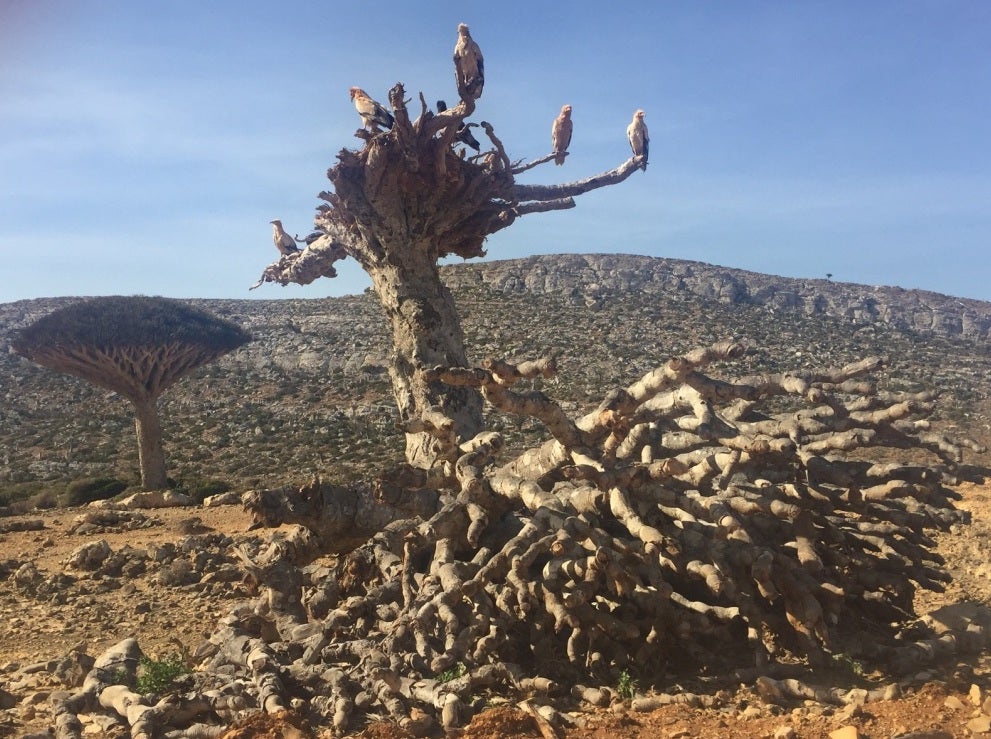
The two huge storms of 2015 killed an unknown – but significant – percentage of the island’s coral, and upended hundreds of ancient dragon’s blood trees.
Locals are attempting to repair the damage with nurseries, but it takes decades for trees to grow to maturity. Fishermen say the effects on Socotra’s diverse fish stocks is yet to be fully understood.
Such fears for the island’s endangered species have been compounded by allegations from some activists that the UAE is illegally taking Socotra’s natural wonders back home.
Many Socotris think that the new flight to Abu Dhabi – which operates without any Yemeni oversight – leaves each week with a few more of the island’s treasures.
The newly expanded port, refurbished by the UAE at an estimated cost of $1.6m (£1.2m), has also strengthened transport links between the Emirates and its new conquest. Socotris say local workers are not allowed on the quayside when the UAE fills up empty shipping containers of Emirati-owned tanker vessels.
Activists believe flora, coral and rock from the island is packed up there, destined for the UAE.
One port worker in Salalah in southern Oman told The Independent he had seen endangered dragon’s blood trees taken out of containers arrived from Socotra.
An activist said she had seen coral and rock from the island used in buildings in the Emirati city of Sharjah. She provided pictures which she did not authorise for publication.
“I don’t know who gave the permission for this,” she said. “Maybe it was a contract [between the UAE] and locals.”
The UAE has denied all such allegations in the past and did not respond to new requests for comment.
“They stole everything, the water from the mouths of the people and the light from their eyes,” one Socotran opponent of Emirates-influence said. “Our history is next."
This is the first in a series of articles from Socotra
Join our commenting forum
Join thought-provoking conversations, follow other Independent readers and see their replies
0Comments